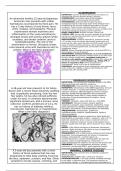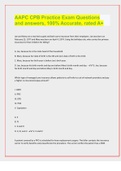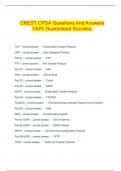Summary
Summary Renal and Urology disease profiles
- Module
- Renal and Urology Conditions
- Institution
- University Of East Anglia
This file contains a summary of important Renal and urological conditions put into disease profile format and can be made into flashcards. It contains pathophysiology, presentation, investigations and management for most of the disease
[Show more]





